Do you love fall mums but hate that they don’t last the whole season long?
Does it seem like you spend a lot on annual mums every year but don’t necessarily get all you want out of them?
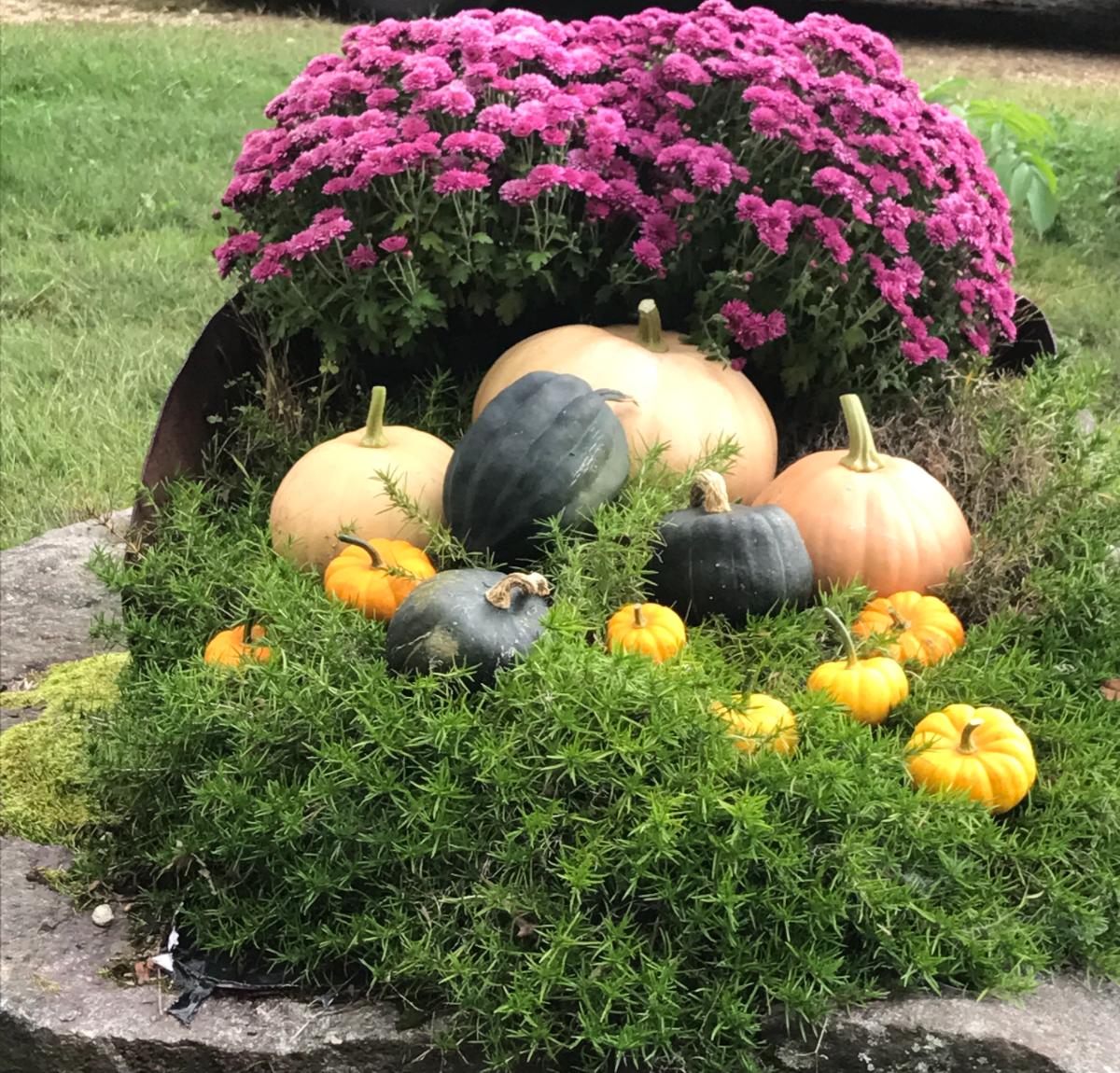
Fall blooming mums may be a sign of the season, but it is frustrating that for the expense every year, we don’t get the long life that we do out of other annuals that last through the spring and summer.
There are some things you can do about this, though!
Jump to:
- 10 Tips to Make Mums Last and Keep Them Blooming Longer Through the Fall
- 1. Don’t buy the bloomiest blooms
- 2. Give mums a sunny spot
- 3. Try to keep mums out of the rain
- 4. Keep mums moist but not soggy
- 5. Water around the entire base of the plant
- 6. Avoid wetting and watering the foliage
- 7. Deadhead mums often
- 8. Protect from frost
- 9. Plant mums in the ground
- 10. Or, overwinter your potted mums to regrow next year
10 Tips to Make Mums Last and Keep Them Blooming Longer Through the Fall
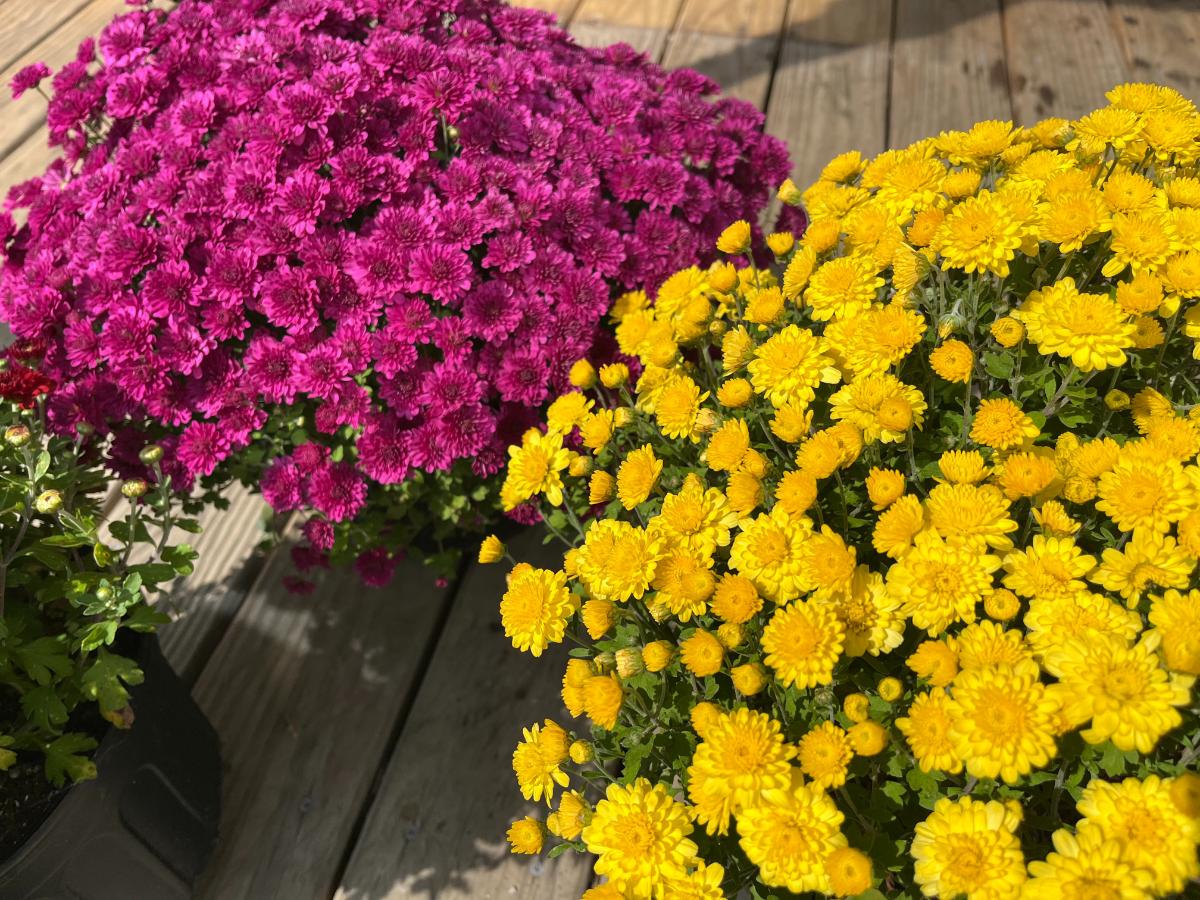
The following tips will greatly extend the life of your fall blooming mums. They’re simple care tips and tricks, but they can really make a lot more of your yearly mum investment.
It starts with the plants you purchase.
1. Don’t buy the bloomiest blooms
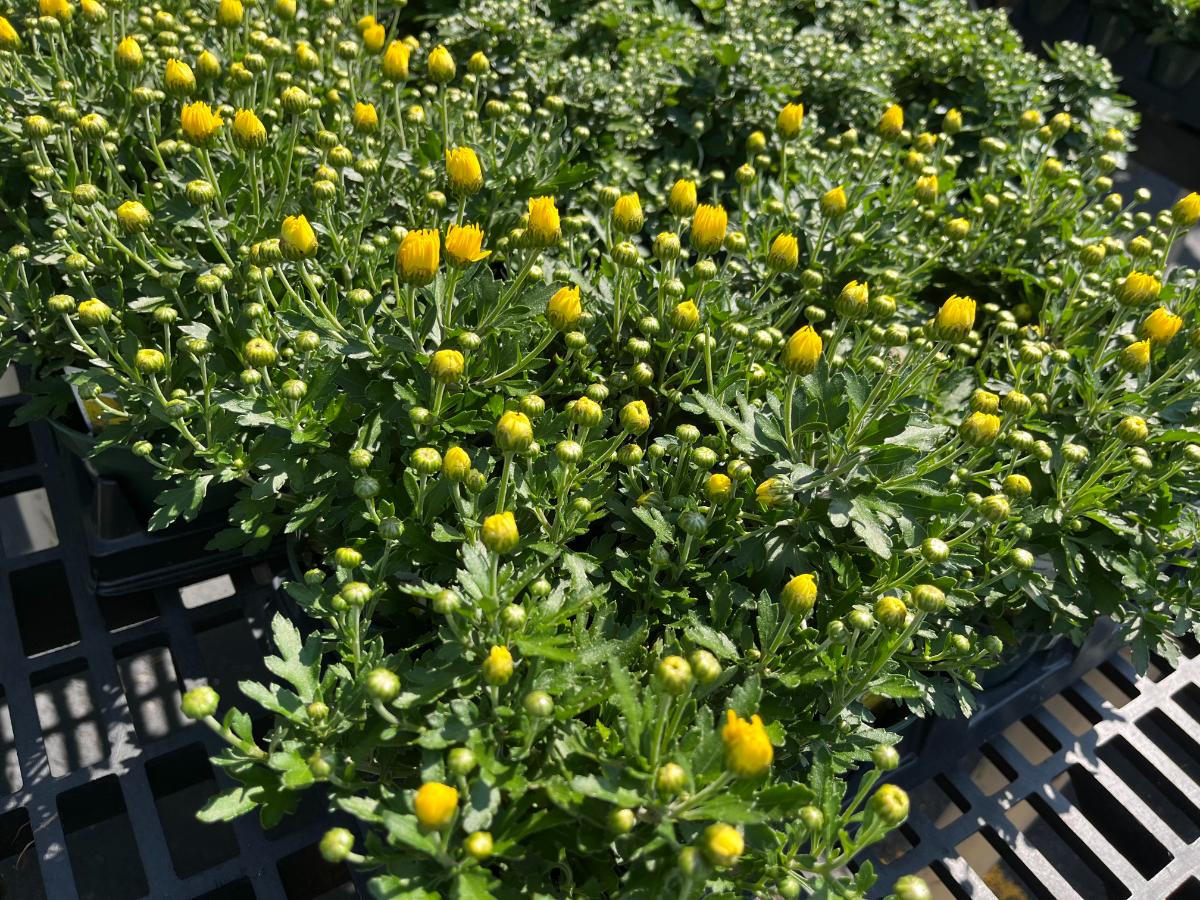
It’s tempting to buy the mums that are open, full of color, and in full bloom. But those are the plants that have the least left to give.
When you buy plants with many open flowers, they’re already well into their bloom cycle, and many of the buds and flowers have been spent in the store.
Instead, buy the plants that have many closed buds. Those are the plants that have either not bloomed yet or are just starting. They’re saving all their buds and blooms for you!
You can get more buds and blooms out of plants that have already begun to open. Follow the tips below. But for the absolute maximum amount of blooms, it’s best to start with plants that haven’t flowered much yet -- if at all.
2. Give mums a sunny spot
Mums like full sun. They will bloom the best in a sunny spot.
So pick a place with full sun. If the space you like to decorate with mums is shaded, that’s not the end of the world, but it will likely slow and reduce the overall number of flowers you get.
The sunnier the better but keep in mind that when instructions say “full sun”, that refers to 6 to 8 hours of sunlight per day.
So, it’s not necessarily the place in your yard that gets sun for all the hours that the sun is up. But do aim for one that gets at least six solid hours of good, strong sunlight.
3. Try to keep mums out of the rain
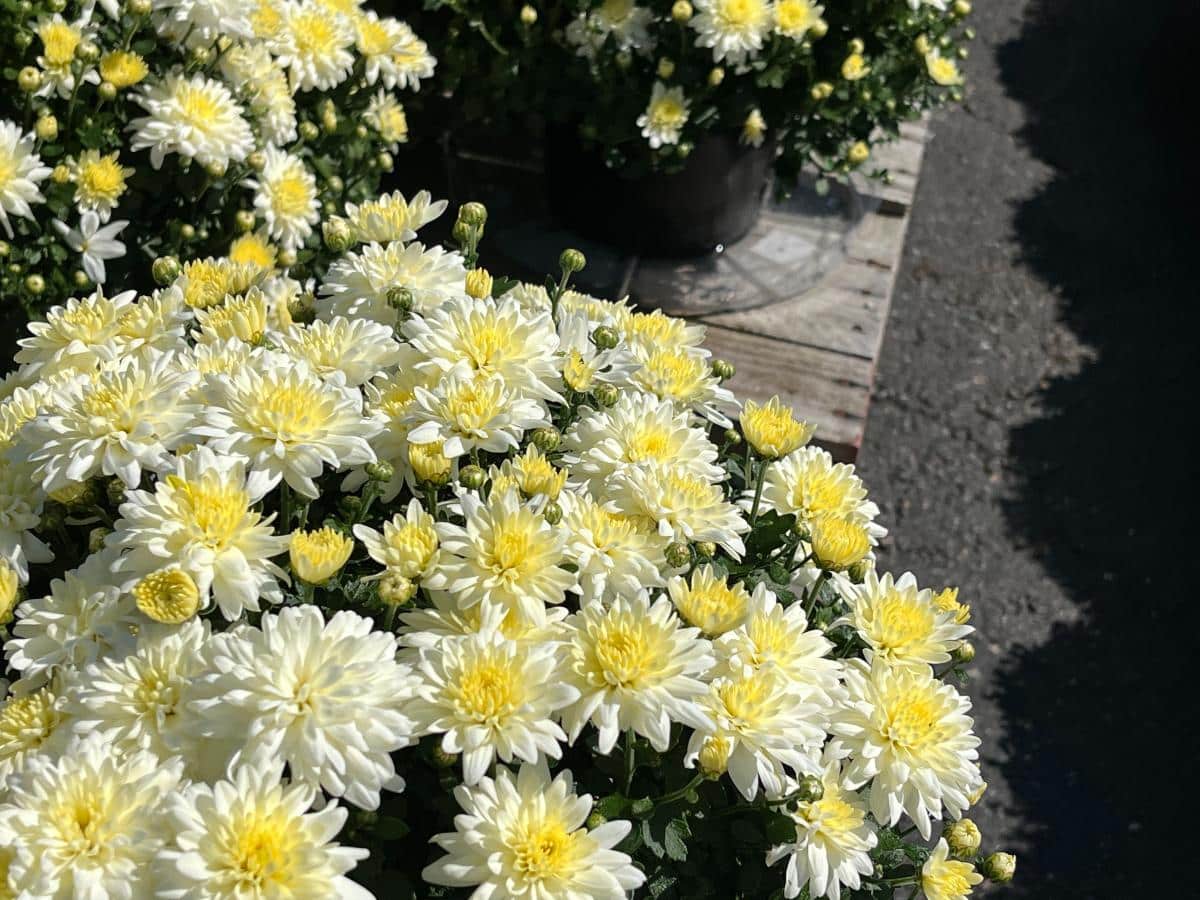
It’s best if that spot can be one where the mums will stay out of the rain. Or at least out of direct rain.
Rain and water on the blooms degrade them faster than blooms that stay dry. It can also invite foliar diseases.
Another problem with rain is that it tends to pound the plants, causing the stems to split away from each other, break, and cause bare spots.
So how do you protect mums from rain but keep them in the sun?
Look for a covered or semi-covered area where the sun angles in. A covered porch can be a good place if it gets a lot of morning sun. Protection from trees and other overhangs that let sunlight in are good options, too.
That said, it’s understandable that a covered space isn’t always the best placement for your mums for either decorative or practical purposes or light access. For this one, you do what you can do. It’s just that if you can accomplish it, less rain exposure will help the flowers last longer.
4. Keep mums moist but not soggy
The soil in the pot or that the mums are growing in should be kept moist. It should not be overly wet or soggy. It should be allowed to dry down some in between waterings. Mums don’t really like wet feet and this can cause root issues and cause blossoms to drop.
You need to let the pot and the plant guide you, but a good general rule of thumb is to water your mums every other day.
Note that “moist but not soggy” also means that you never let your mums dry out completely. If the plant dries out, buds and flowers will, too, and that will cause premature death to your flowers -- even if the plant itself is able to rebound.
5. Water around the entire base of the plant
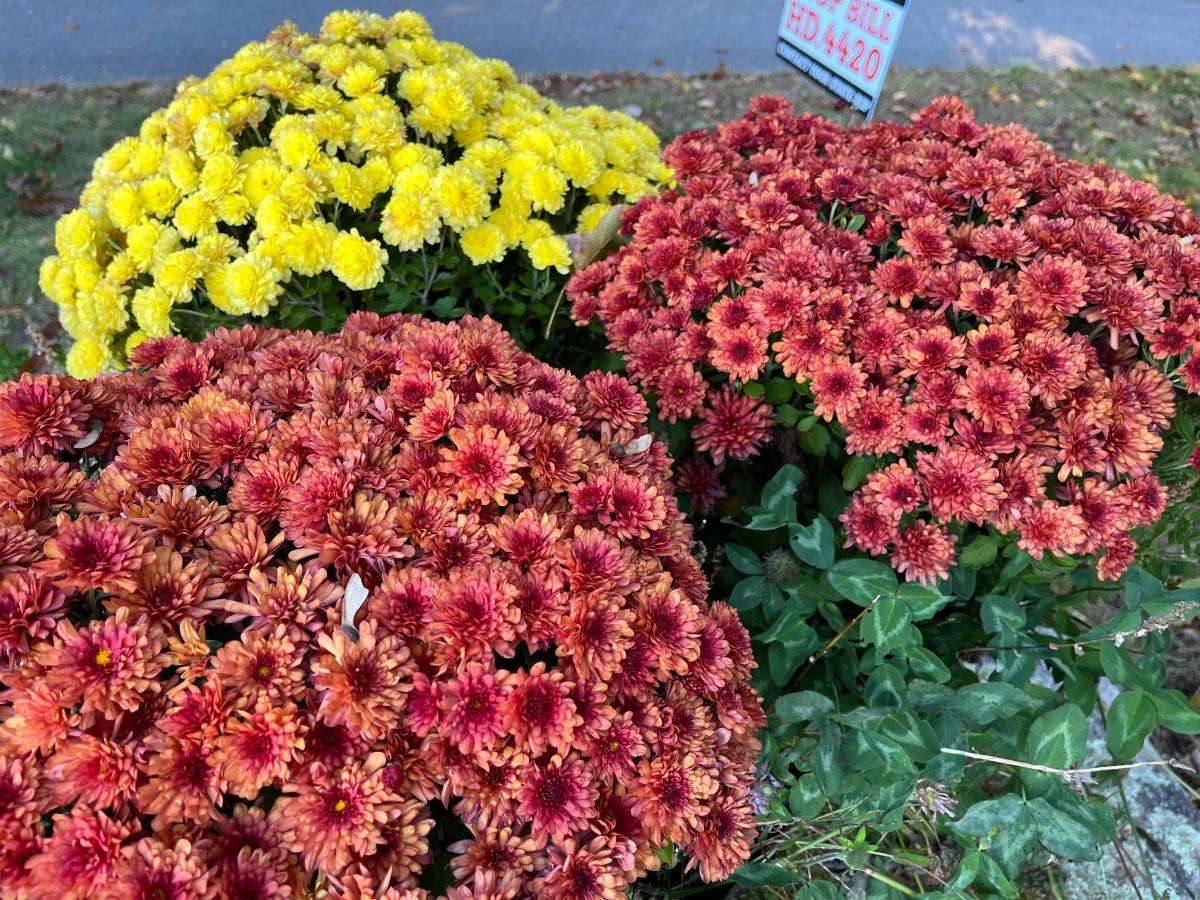
When you water, water at the base of the plant.
Also, make sure you move around or spin the pot and water all the way around the outside at the bottom of the plant.
Mums are tight plants and if you only water from one spot, the water tends to stay in that area. The stems and foliage can easily block the water and make it run off.
You’ll have less breakage and better water distribution if you water along the outside and under the stems, all the way around.
6. Avoid wetting and watering the foliage
We know that wet buds have shorter lives (which we learned in the rain protection tip). It’s the same if we wet the buds when watering.
This means, no watering from overhead, such as from a shower head on a hose or even from a watering can over the top.
Really, wetting from watering is probably worse because you’ll probably be watering mums more often than they’re experiencing rain, and the plants tend to stay wetter for longer when you do.
Frequently watering your mum's foliage is a bad idea, too. This makes them subject to fungal and mildew diseases. This is especially true with the frequency of watering, especially for potted plants (because they are watered so much more often than mums planted in the ground).
The other problem with watering over the top of the plant and foliage is that a lot of that water will never reach the soil and plant roots. The plants shed water easily because they are so tight. The water is more likely to run from leaf to leaf off the plant, with little of it getting to the soil.
Water spouts and streams and watering from above or tends to cause stem breakage, too. This leaves big bare spots in otherwise nicely shaped globe-like plants. They can’t regrow fast enough to repair it.
Again, watering around the base below the leaves is a much better idea, and the water will actually get where it needs to go.
7. Deadhead mums often

Fall mums do benefit from deadheading and they will respond well to it.
If you clip off the flower heads that are going or have gone by, you will not only freshen it up and make it look a lot better, but you will signal that plant to replace those flowers. The younger, smaller buds behind the dead flowers will get the light and resources they need to grow.
This will result in several flushes of flowers over many weeks.
To deadhead mums, prune at the first set of leaves below the dead flower. A simple snip is all it takes!
8. Protect from frost
Mums are hardy, but frost will kill them, and it will kill the flowers. You might get away with a light frost or two, but even if you do, it will ruin the look, quality, and lifespan of the flowers. Sometimes, the plant will survive, and the flowers will be killed.
There are never any guarantees that your mum will survive even a light frost, so you always want to cover and protect the plants.
The first frosts of the season usually happen at a time when the daytime temperatures are still fine for supporting life and even active growth.
In other words, even though it may get freezing cold at night, the days are not that cold, and if you can get the flowers through the nighttime frost, they’ll live for many more weeks.
You can easily protect your mums from frost by covering them at night when a frost is predicted or by moving potted plants inside.
A cloth sheet or frost fabric is best for protecting plants from frost. Plastic can be used, but it holds cold, so it isn’t quite as good as a fabric cover.
If you take a few minutes to cover your mums when frost is coming, you can keep those plants blooming for several extra weeks.
9. Plant mums in the ground
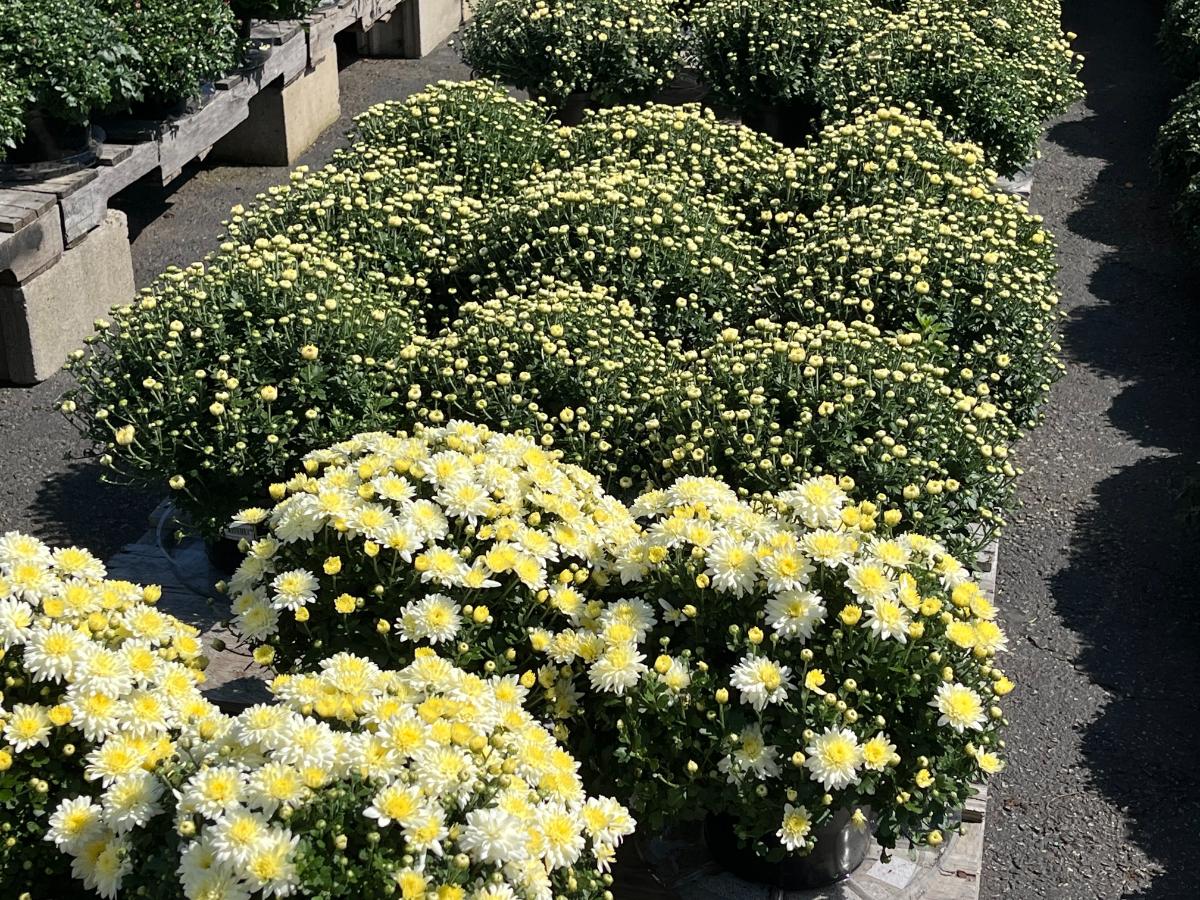
Mums are often thought of as just potted plants, but the truth is that they are perennials. There are two types, and all of them are hardy to at least zone 7 and equivalent locations. Hardy mums are hardy down to zone 5.
Planting mums in the ground may give them a chance to overwinter and live as perennials in your yard (depending on the type -- more on that here).
Even if you don’t care if they live as perennials, it can be worth planting mums in the ground just for the fall. Ground conditions will promote more root growth. It is easier to keep plants watered in the ground, where they have access to ground moisture.
Caring for mums in the ground is generally easier and will often promote better, longer-lasting blooms (but deadheading is still smart).
Ground planting also gives you more display and design options. It’s a more natural look that can easily revive flower beds that have nothing left to blossom in the fall.
10. Or, overwinter your potted mums to regrow next year
Your dormant mums can be brought inside to overwinter. Do this after the cold has really set in and the plants have started to die back.
Water your overwintering mums and keep the soil moist. Check the pots at least once a month, and don’t let them ever dry out completely.
Keep your overwintering dormant mums in a cool, dark place like a basement, garden shed, garage, or greenhouse. They’ll often survive dormancy with very little care.
Sometimes, with our milder winters, your mums may even overwinter outside in pots. So even if you don’t want to put in the effort, it’s worth putting the pots in an out of the way space where they can get water from rain and snow, and then checking them for new growth in the late spring (it will happen from the bottom up so look closely at the bottom of the plant).
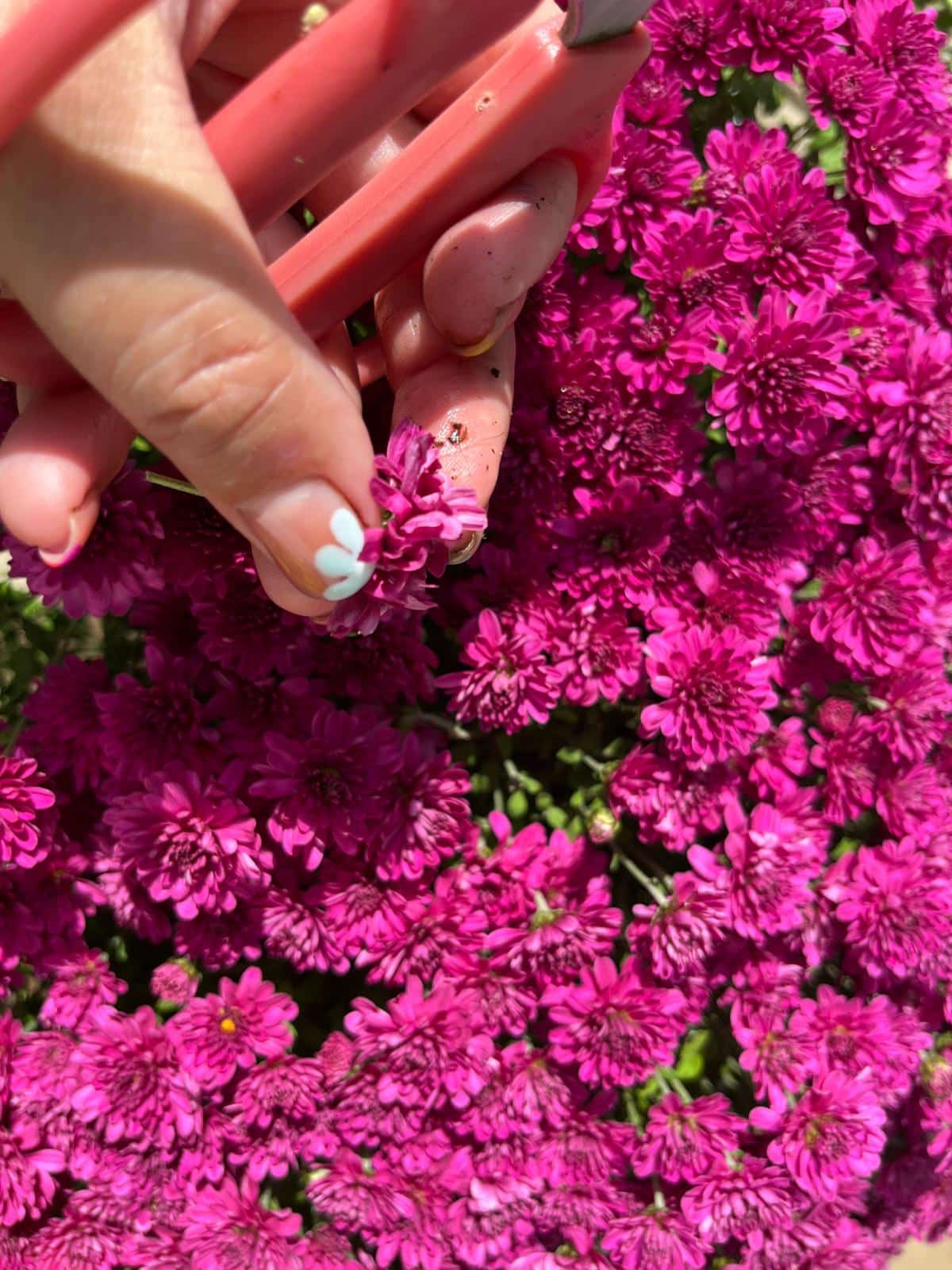
In the spring, you can decide if you want to plant your overwintered mums in the ground. They will get more time to establish roots, and this will give them even more of a chance to establish as perennial plants than planting in the fall will (because of the longer root growing time through the summer season).
Don’t expect mums to flower in summer, though -- they are still fall bloomers.
Though we usually treat fall chrysanthemums (mums) as annuals, they are not. Growing mums more as perennials than as annuals is the best way to get the longest blooms from them, for sure.
You can enjoy the same plants for many years, grow larger plants with even more blooms, and you can stop spending money every year on new fall mum plants!

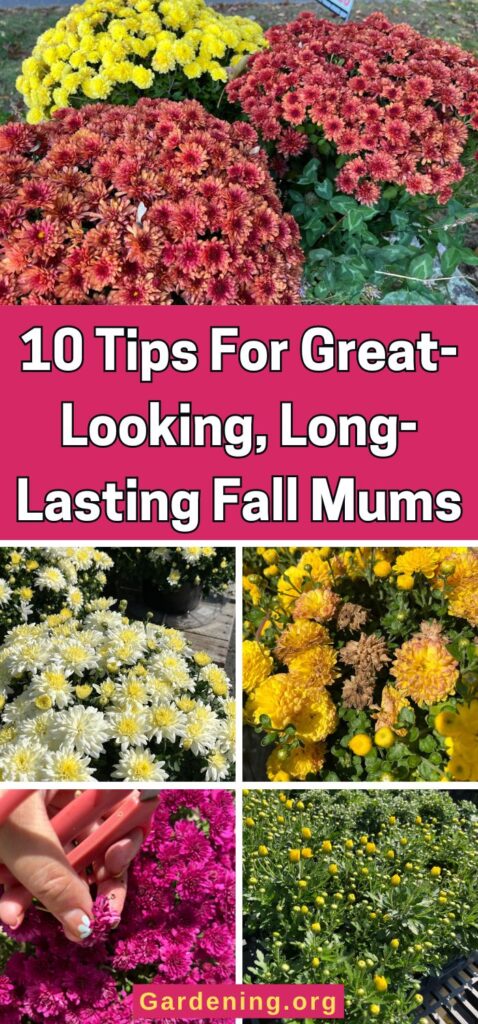
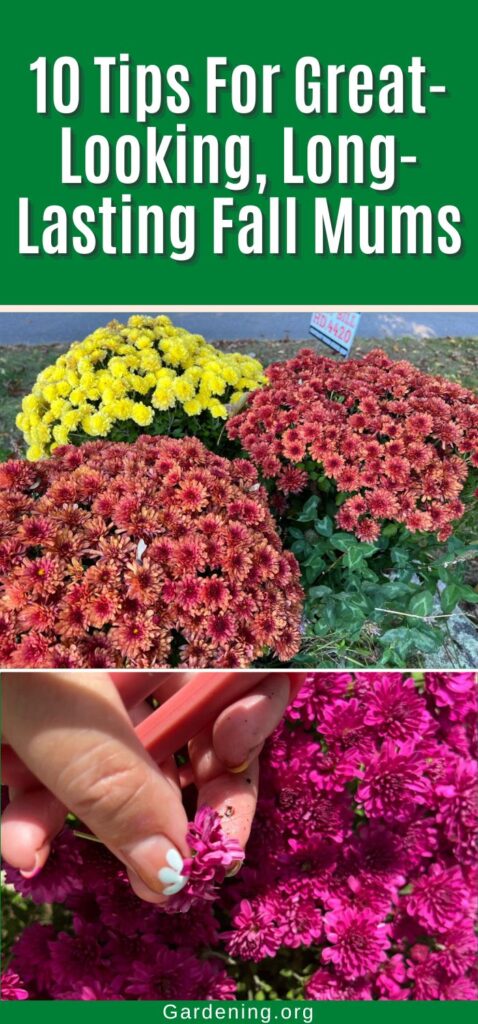
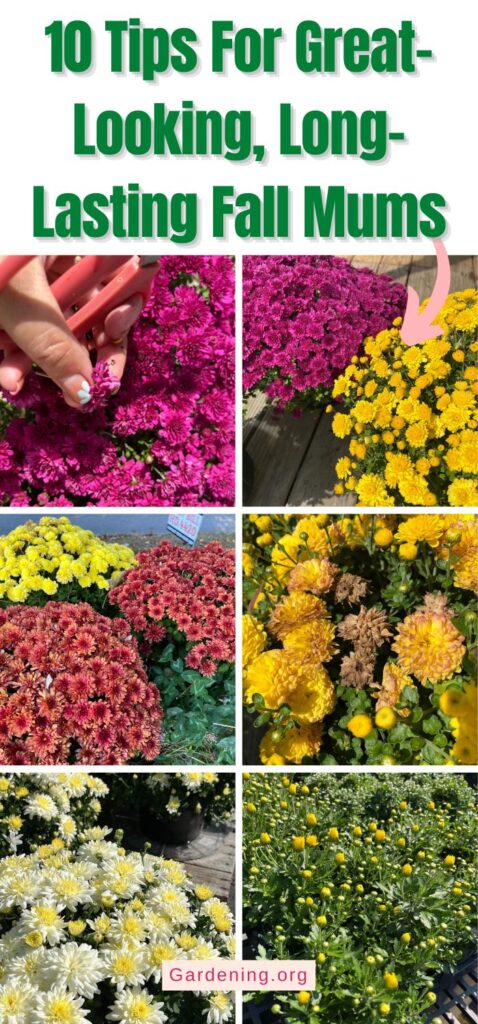
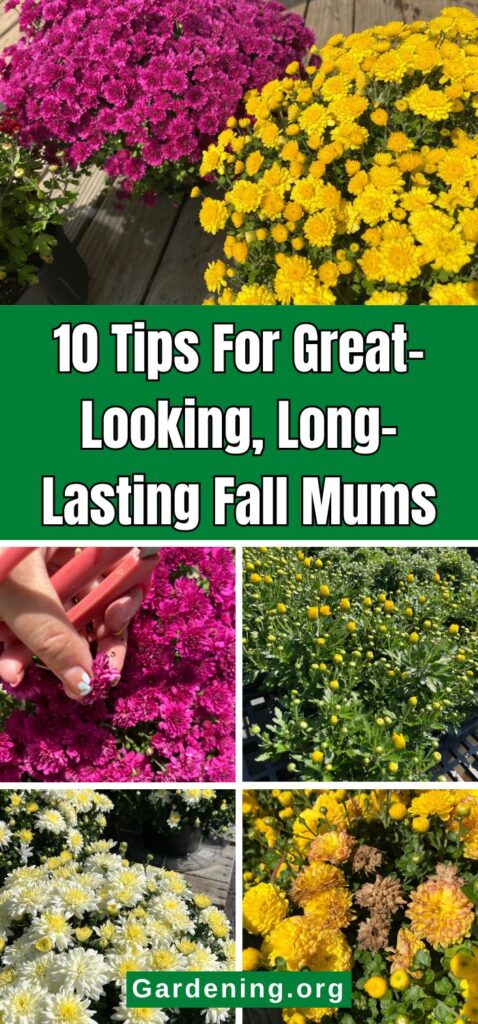
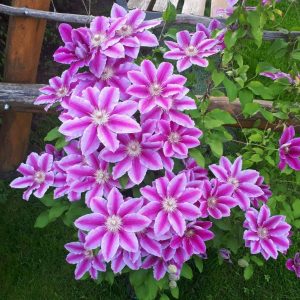
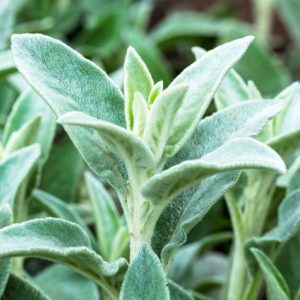


Leave a Reply